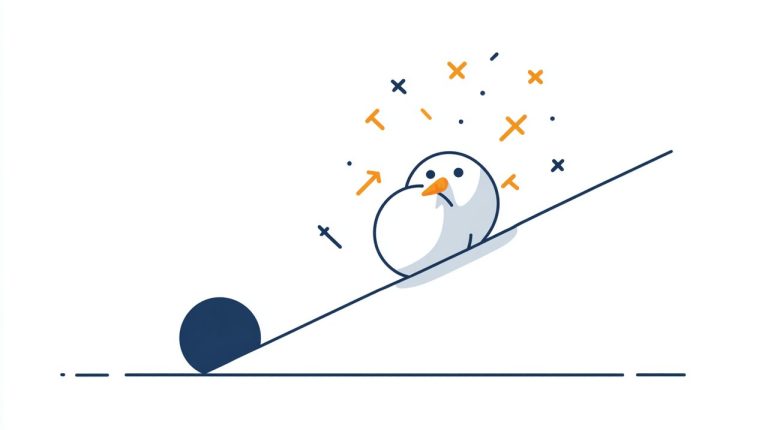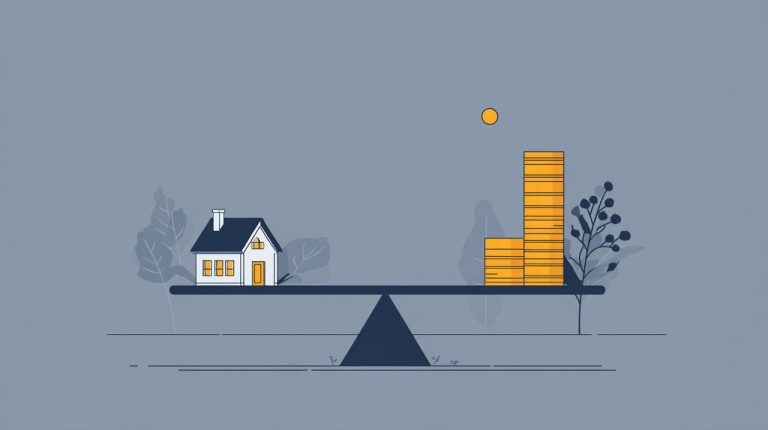For many aspiring homeowners, the monthly mortgage payment often feels like the entire financial picture. But here’s a crucial insight: much like an iceberg, the true cost of owning a home extends significantly beyond that visible monthly sum, which can be precisely estimated using dedicated tools Mortgage Calculator.

It’s those often-overlooked expenses—what we call the “hidden costs,” specifically property taxes and home insurance—that can frequently catch new buyers off guard, leading to confusion and unnecessary stress. These aren’t just minor add-ons; they’re fundamental to your long-term financial well-being as a homeowner.
This guide is designed to systematically demystify these complex concepts. We’ll walk you through eight practical, actionable strategies to accurately estimate and effectively manage these critical homeownership expenses, moving from core understanding to specific calculation methods, ultimately helping you build a robust financial plan.
From Passive Acceptance to Proactive Control: Shifting Perspectives on Hidden Costs
During the excitement of buying a home, it’s easy to passively absorb information from real estate agents or lenders, often thinking, ‘we’ll deal with those details later.’ When it comes to property taxes and insurance premiums, this ‘wait and see’ approach can unfortunately lead to budget overruns and avoidable financial stress.
“Knowledge is power, especially when facing financial decisions.”

True financial control, we believe, stems from foresight and a comprehensive understanding. When you proactively investigate these seemingly complex fees, you’re not just crunching numbers; you’re cultivating genuine financial foresight.
This shift transforms uncertainty into manageable variables and potential risks into carefully planned budget items. It means integrating these ‘hidden’ components into your initial considerations, rather than treating them as unwelcome surprises down the line.
Understanding Property Tax’s Nature and Composition
Property tax is essentially a local government levy on property owners, and it’s vital for funding essential community services like schools, public safety, and infrastructure. It’s important to remember that this isn’t a uniform national figure; it’s determined by local authorities based on your property’s assessed value and the millage rate (or tax rate).
Local government assessors typically re-evaluate a property’s assessed value periodically. Meanwhile, the tax rate itself is set by local legislative bodies. This means that even if you don’t move, your property tax obligations can fluctuate due to changes in assessed value or adjustments to the tax rate.
Grasping this fundamental principle is the very first step toward accurate estimation and effective budgeting.
Demystifying Home Insurance: Types, Coverage, and Necessity
The primary role of home insurance is to provide crucial financial protection for your dwelling and its contents against unforeseen events like fire, theft, and natural disasters. If you have a mortgage, your lenders typically mandate home insurance coverage to safeguard their financial interest in the property—it’s a non-negotiable part of the deal.
However, it’s a common misconception that all home insurance policies are the same. Standard homeowner’s insurance (HOI) usually excludes specific risks such as floods or earthquakes. Therefore, depending on your property’s geographical location and potential hazards, you might need to purchase additional specialized coverage, like flood or earthquake insurance.
A thorough review of your policy terms, including the exact scope of coverage and all exclusions, is absolutely essential to ensure you’re fully protected.
Estimating Property Tax: Information Sources and Calculation Steps
Estimating property tax accurately requires you to be proactive in gathering information. The most reliable source of data is always the official website of your local government’s tax assessment department, often referred to as the County Assessor’s Office.
There, you can typically find historical assessed values for a property and the current local tax rate. Here are the specific steps to estimate your property tax:
- Locating Assessed Value: Visit your county assessor’s website, input the property address, and query its value. Remember, the assessed value may differ significantly from the market sale price.
- Confirming Tax Rate: Consult the latest local tax rate information. This is commonly expressed in “mills” (per thousand) or as a clear percentage.
- Performing Calculation: Simply multiply the assessed value by the tax rate to determine your annual property tax. For instance, if the assessed value is $300,000 and the tax rate is 1%, your annual property tax will be $3,000.
A common pitfall is relying solely on the seller’s past tax statements. Both property assessed values and tax rates can change after your purchase, so always verify current data.
Estimating Home Insurance Premiums: Influencing Factors and Obtaining Quotes
Estimating home insurance premiums can be a bit more variable than property taxes, as numerous factors influence the cost. These include your property’s geographical location (considering crime rates or natural disaster risks), the home’s construction materials and age, your personal credit score, and the deductible amount you choose.
The most effective method for obtaining relatively accurate quotes is to contact multiple insurance providers directly. Be sure to provide detailed property information, such as the year of construction, square footage, structural type, and any security systems you have, to receive truly personalized estimates.
Generally, opting for a higher deductible can help reduce your premiums. However, this also means you’ll face a greater out-of-pocket expense if you ever need to file a claim, so it’s a balance to consider.
Understanding Title Insurance and Private Mortgage Insurance (PMI)
Beyond property taxes and standard home insurance, you might encounter two other types of insurance during a home purchase: Title Insurance and Private Mortgage Insurance (PMI). Each serves a distinct, important purpose.
Title insurance safeguards both you, the buyer, and your lender against historical issues with the property’s title—think undisclosed liens, fraudulent documents, or ownership disputes. It’s typically a one-time payment made at closing, offering long-term peace of mind.
PMI, on the other hand, is required by lenders when your down payment is less than 20%. Its sole purpose is to protect the lender’s interest by covering potential losses if you, the borrower, default on your mortgage. It’s crucial to understand that many homebuyers mistakenly believe PMI directly benefits them, but its coverage is strictly for the lender.
Understanding its triggering conditions and the mechanisms for its cancellation (for example, once you reach a certain equity threshold in your home) is incredibly important for managing your long-term costs.
ESCROW Accounts: Convenience or Obligation?
An ESCROW account, also known as a trust account, is a specialized account established and managed by your mortgage lender. Its primary function is to collect a portion of your monthly property tax and home insurance payments, then disburse them to the relevant authorities when they are due.
This mechanism typically ensures these critical expenses are paid on time, thereby protecting the lender’s investment. The main advantage for you is convenience, as it eliminates concerns about missed payments or having to save up for large, lump-sum disbursements.
However, a potential drawback is that you lose direct control over these specific funds. Additionally, lenders may periodically adjust ESCROW deposit requirements based on updated estimates, which can lead to fluctuations in your overall monthly mortgage payment. As a homeowner, regularly reconciling your annual ESCROW statements is essential to verify accurate fund utilization.
Constructing Your “Hidden Cost Calculator”: Integrated Planning and Long-Term Impact

Integrating all the information we’ve discussed, you’re now equipped to construct your very own “hidden cost calculator.” This can be as simple as a spreadsheet itemizing all your non-principal and interest monthly expenses, including property taxes, various insurance premiums, and any potential HOA (Homeowners Association) fees.
An effective calculator should encompass the following key elements:
- Property Tax Estimation: Based on your property’s assessed value and the current tax rate.
- Home Insurance Estimation: Derived from multiple quotes and your chosen coverage level.
- PMI (if applicable): Your estimated monthly cost.
- Other Fees: Such as HOA dues, waste disposal fees, or other recurring charges.
Through this systematic approach, you gain not only a clear overview of your total monthly expenditures but also the powerful capacity to project your financial obligations for several years into the future. This foresight empowers you to adjust your homeownership budget as needed, ensuring sustainable and prudent financial decisions.
The journey of homeownership is rich with both promise and challenges. Understanding and effectively managing the ‘iceberg’s hidden depths’ is a pivotal component of this journey. This guide has systematically dissected the operational mechanisms of property taxes, various insurance types, and ESCROW accounts, providing you with a comprehensive toolkit from conceptual understanding to practical estimation.
Mastering these hidden costs not only mitigates potential future financial shocks but also empowers you to make more confident and informed homeownership decisions. When you transform these uncertainties into clear, quantifiable figures, you gain genuine financial clarity. Now, the time has arrived to apply this knowledge. Begin your research, consult with professionals, and construct your personalized ‘hidden cost calculator.’ Lay a robust financial foundation for your future home.
💡 Frequently Asked Questions
Beyond the monthly mortgage payment, the primary 'hidden costs' of homeownership are property taxes and home insurance. Other potential costs can include Title Insurance and Private Mortgage Insurance (PMI).
To accurately estimate property taxes, you should visit your local government’s tax assessment department website (like the County Assessor’s Office) to find the property's assessed value and the current local tax rate. Then, multiply the assessed value by the tax rate.
Home insurance premiums are affected by several factors, including the property’s geographical location (considering crime rates or natural disaster risks), its construction materials and age, your personal credit score, and the chosen deductible amount.
An ESCROW account is managed by your mortgage lender to collect a portion of your monthly property tax and home insurance payments. It then disburses these funds to the relevant authorities when they are due, ensuring timely payment of these critical expenses.








